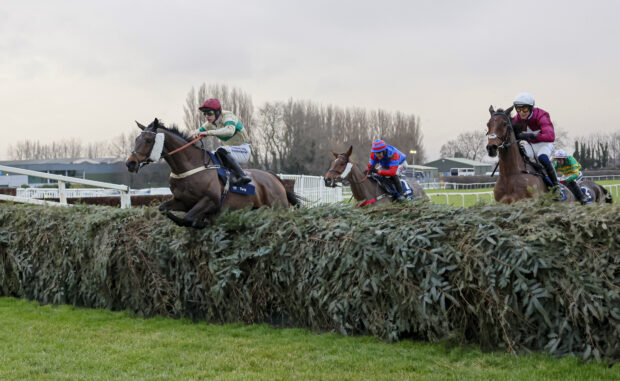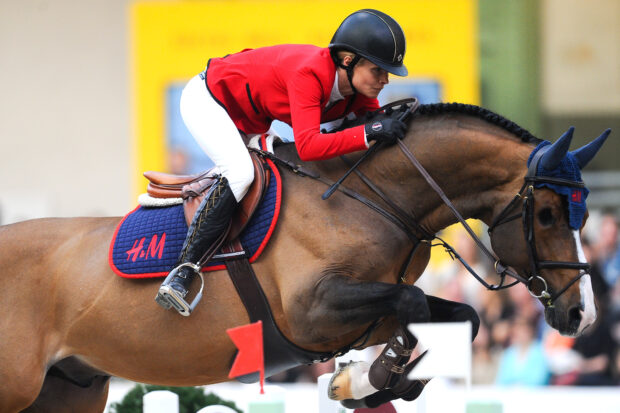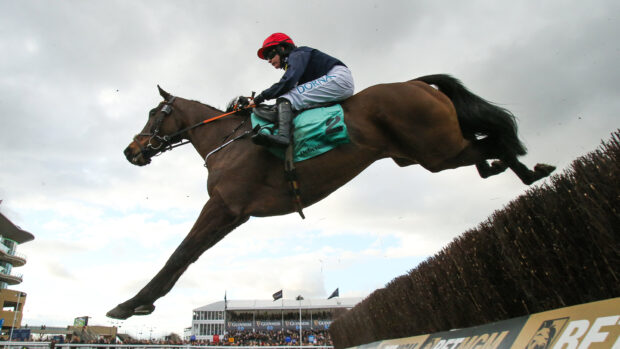Point-to-pointing a young horse provides a challenge, but inexperienced owners/trainers are better advised to learn the pitfalls with an experienced campaigner.
The sport provides an education for young horses, some of whom may have a future in steeplechasing under Rules (“professional” racing).
For that reason, a young horse does offer a chance – although it is a slim one – of making a profit. If your youngster wins races, you might get approaches from agents or trainers looking for talented five-six-and seven-year-olds (sums of £20,000 to £50,000 for good young pointers are not uncommon). However, talented 12-year-olds fetch nothing like those figures.
There are restrictions on running horses in point-to-points. They can racefrom the age of five, but if you buy a youngster which has won a race on the Flat or over hurdles, it will only be eligible for open races or hunter chases ¨ that means pitting it against older, experienced jumpers, an obvious handicap.
Check on ahorse¨s racing record before you buy it – Weatherby’s in Wellingborough (tel: 01933 440077) can supply information.
Preparation
To qualify for point-to-pointing, a horse must hunt at least seven times to gain qualification for pointing. Taking a youngster hunting is often the first indication that a new acquisition has a real future, or is a maniac which would be lethal on the racecourse.
Do not be disillusioned if a young horse refuses to jump out hunting -some do not, yet leap like stags in races.If a youngster is sensible, there is no reason why they should not go out hunting more than seven times – they will gain a level of fitness and jumping acumen, but much will depend on the country, amount of plough and, wire.
There are no rules governing the amount of schooling a horse has to do before making its pointing debut. However much time you invest in training, there are some young horses who give the impression that they have never seen a birch fence, which, it must be remembered, is dangerous for other competitors. Young horses may be given ample schooling, but forget the lessons in the excitement of being on a racecourse.
Schooling should involve jumping birch fences of the design, but not the size, used at the races – it is no good simply piling up bracken or fallen branches.
You need at least two, but preferably three, fences in a line, wide enough for horses to jump alongside each other. They need not be as big as racecourse fences, but it helps if they are well built – not an impenetrable solid, but not so soft that horses can brush through – that teaches bad habits.
It is generally cheaper to hire facilities with suitable fences – if that person has a horse who can jumpin front or alongside, creating a semi-racing situation, so much the better.
With a young horse who quickly grasps the idea, you might need to school in this manner only twice. If they are slow to learn, repeat the lessons, although you might have to go back to jumping over poles or little hurdles if the issue creates panic in the youngster.
Once a horse has raced, he generally does not need to school again that season, unless he has fallen, or there is a lengthy gap between races.
Assessing fitness
With livery yards now dominant in the sport, a horse has to be really fit to compete. Assuming preparations have gone smoothly (roadwork, cantering, hunting) you need to be able to canter your horse daily and do faster work twice a week, for at least six weeks prior to raceday.
Gauging whether a young horse is fit enough to race is difficult – too much work and you can send a horse “over the top” ie take away their reserves of energy, too little work means they will get tired in a race, increasing the risk of falling or incurring an injury.
Sore shins are a problem for young pointers, but common when they are raced on firm ground. Point-to-pointing has a scale of races which young horses can go through, taking on stiffer competition as they improve. The logical place for a young horse to start, assuming it has never won, is a maiden race. Usually the slowest race on the card, this does not mean the early pace won’t be fierce. If the youngster wins, the next stage is a restricted race.
The drawback to maidens is that they can have many runners of which some will be green and make a real mess of the job. Your horse might be brought down, or be the cause of a pile-up. Depending on the horse’s temperament, this could prove an education or a nightmare.
For that reason, some people prefer to give their youngsters an educational debut against mature horses in better races, an open or confined race, for instance, before returning to maiden company. Open races sometimes have few runners, especially if a real star is declared which frightens off the opposition.
That plan has its drawbacks, too. There could be a sustained and searching gallop which proves too much for your youngster. There is a risk that the novice horse will learn little, may become disillusioned, or fall in the bid to go the pace.
Alternatively, the star might fall, bring down two others and you might be unlucky enough to win! However tempting this mayseem, you don¨t want to begin your winning account in an open race, because that would preclude your horse from running in easier maiden, restricted and intermediate races.
By the same token, you cannot instruct your rider not to win, or that wouldcontravene Jockey Club regulations resulting in a fine or ban.
A hunt race, often with very few runners, could be another easy option, but be on your guard for a walk over which would mean your horse is a “winner”, has learnt nothing, loses maidenstatus and could be lumbered with a penalty in future races. Pick your youngster’s early races carefully, and, in a race, keep them away from other horses who look unschooled. An experienced rider is a major factor in the welfare of your horse at thistime.
Choosing the right course
Some courses have a “trappy” fence, some are blighted by false or rough ground, or tiring, holding ground when the weather is wet. Some are demanding in terms of stamina. Some have upright fences, others have fences that are too soft which can encourage youngsters to take liberties with fences with obvious long-term drawbacks. Talk to experienced riders before entering your horse.
If your youngster is precocious and bred to be a Flat racer, they will be mature by the age of five or six and possibly capable of doing plenty of point-to-pointing. Licensed trainer Martin Pipe races many young horses of this type. Later maturing horses, will benefit from a quiet season as five-or six-year-olds. Three or four runs gives a valuable education, but is unlikely to sour a horse, although this depends on the horse’s general well-being.
Definitions of races
- Maiden – for horses, aged five and over, who have never won
- Restricted – for horses a) which have never won b) won only a maiden or hunt race
- Intermediate – for horses a) which have never won, b) maiden, restricted, hunt race and bumper winners, c) winners of one other intermediate
- Open ¨ for any qualified horse
- Confined – for any qualified horse from a confined (local) area
- Hunter Chase – a point-to-point run under Rules at a racecourse (rather than point-to-point course), with fewer restrictions on prize-money, and individual conditions for each race, – must have won an open race, must not have won a hunter chase.


